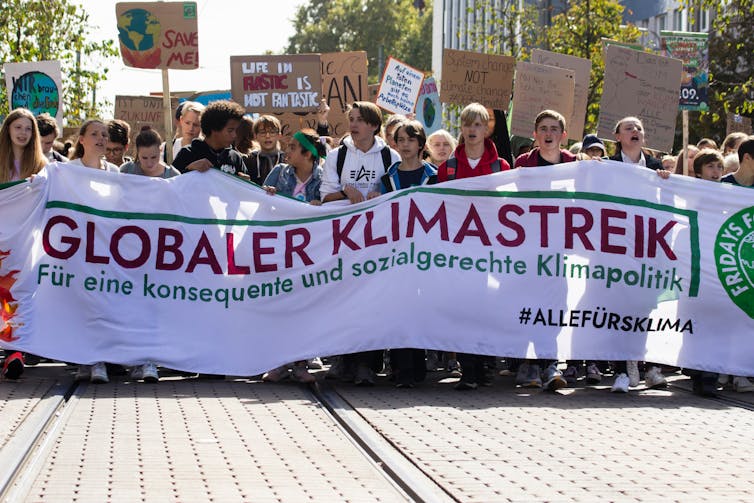In the heady days of the early 2010s, social media was the ultimate democratic tool, supporting the Arab spring and coordinating protests like Occupy Wall Street. This early optimism faded by the middle of the decade, as social media platforms were increasingly exposed as hotbeds for far-right organising.
The role of platforms like Twitter and Facebook in toppling governments might have been overblown, but as the climate crisis gathers pace, social media may find its calling among online activists eager to protect the planet.
Large campaign groups like Greenpeace and WWF once dominated the conversation on environmental issues. These organisations rely on formal membership and donor lists to operate. More recently, environmental movements have embraced looser networks of people, often held together by common phrases, hashtags or images.
Two prominent examples are Fridays for Future and Extinction Rebellion. Neither group centrally organises protests or actions that require the consensus or involvement of the whole group. Instead, each uses social media to invite all interested parties to join the movement on their own terms.
This might mean using the hashtag #FridaysForFuture or participating in a school strike. Involvement in Extinction Rebellion can range from simply wearing a badge with the now globally recognised logo to gluing yourself to a road or building.

Hashtags allow movements to reach a vast audience. PEnsell Photography/Shutterstock
Rather than trying to use social media to organise events and actions, environmentalists increasingly use it to demonstrate how many other people share a cause. This allows people to take action in multiple places and times, with many encouraged to join by the number of like-minded people they see online.
Common threads
Research on anti-fracking movements in Argentina has revealed that activists in the country remain largely disconnected from one another, with little interaction between groups despite shared goals. This failure to reach a nationwide consensus on how to combat the gas industry may seem like a point of weakness, but social media has made it a source of strength.
Online platforms let activists share ideas, such as the right to clean water and the threat of climate change. This helps movements link disparate concerns to a root cause – in this case, fracking. Activists with differing views on strategy can overcome the need for coordination as shared narratives unite thousands of people behind a single goal (in this case, outlawing fracking) without the expense of formal organisation. At the same time, online movements can amplify different stories of social and environmental harm which help win more supporters.
Environmental activists are rarely fighting to highlight isolated issues. Instead, many are campaigning against the systems that enable environmental destruction in the first place. The far-reaching agendas that result can cause conflicts between activists as they argue about priorities.
These conflicts can be minimised when social media is used as a loose meeting place for showing solidarity, identifying common ground and brandishing shared words and images that allow like-minded people to recognise each other. These platforms can allow local and global movements to grow exponentially – each perhaps with a slightly different agenda, but under umbrellas that make each movement and campaign seem larger than they are, and more difficult to ignore.
Don’t have time to read about climate change as much as you’d like?
Get a weekly roundup in your inbox instead. Every Wednesday, The Conversation’s environment editor writes Imagine, a short email that goes a little deeper into just one climate issue. Join the 10,000+ readers who’ve subscribed so far.![]()
Doug Specht, Senior Lecturer in Media and Communications, University of Westminster and Anastasia Kavada, Reader in Media and Politics, School of Media and Communication, University of Westminster
This article is republished from The Conversation under a Creative Commons license. Read the original article.
Photo by Mika Baumeister on Unsplash












